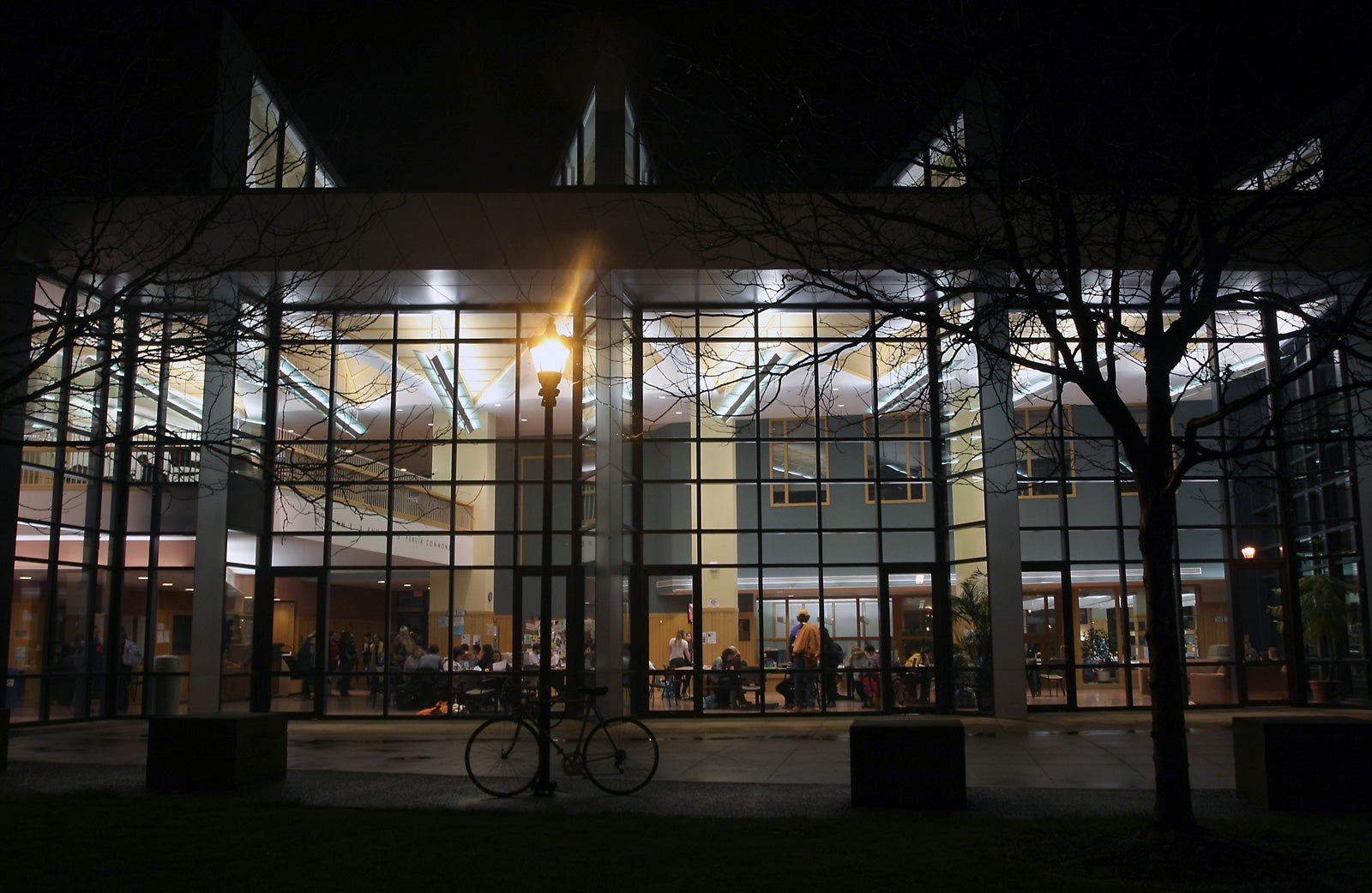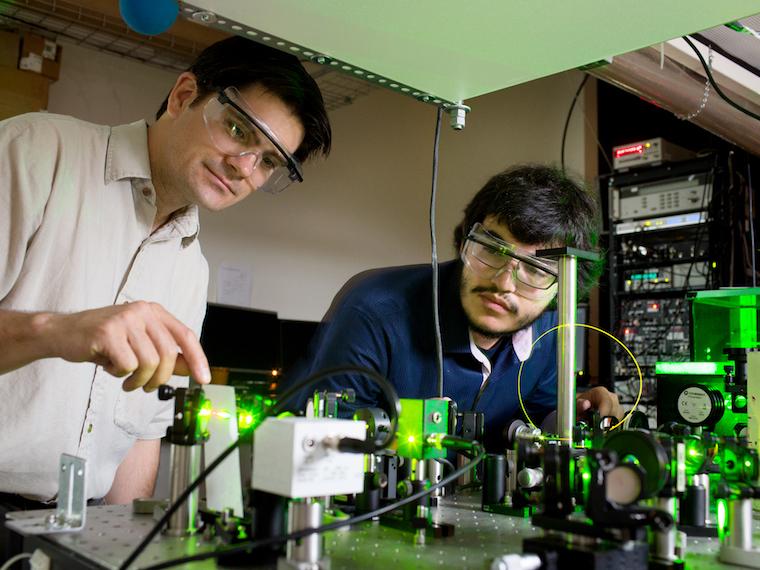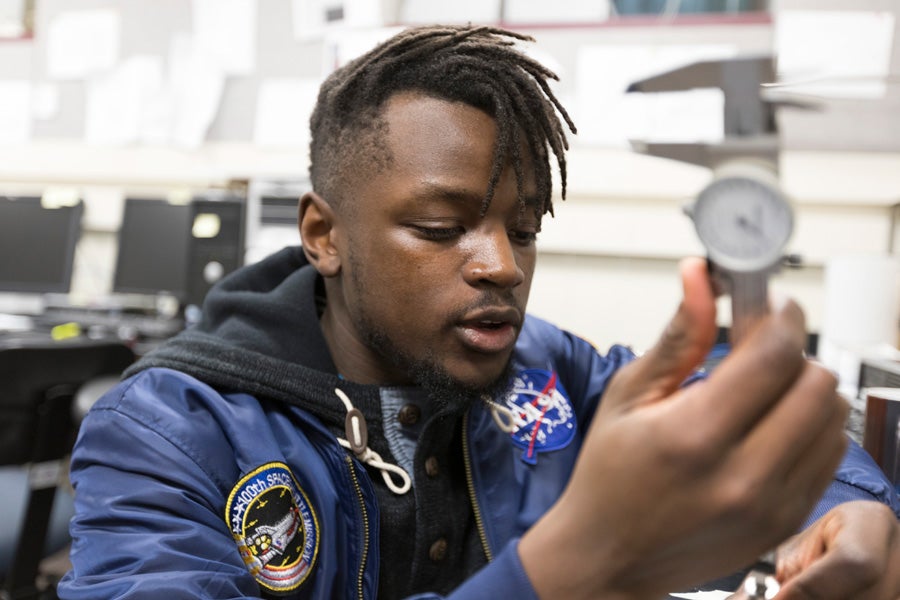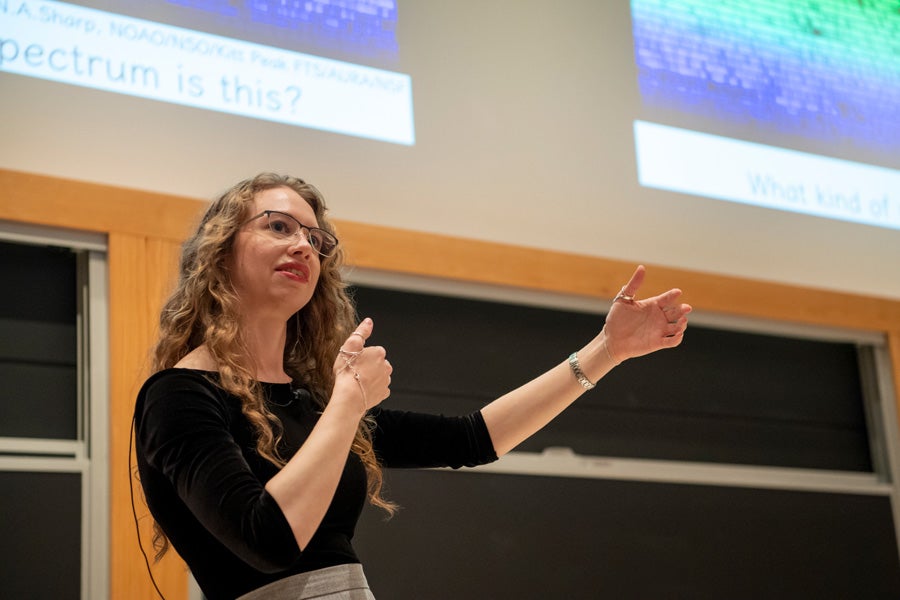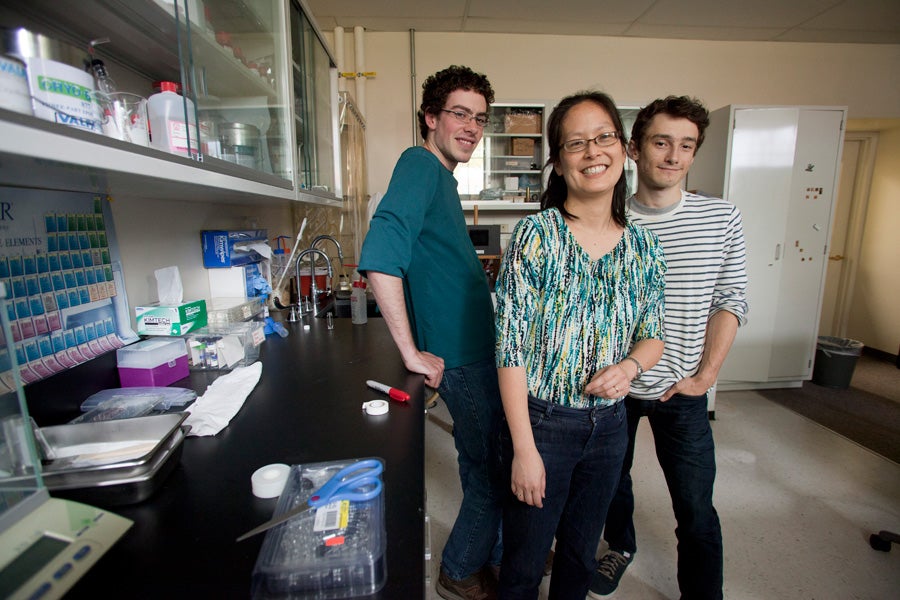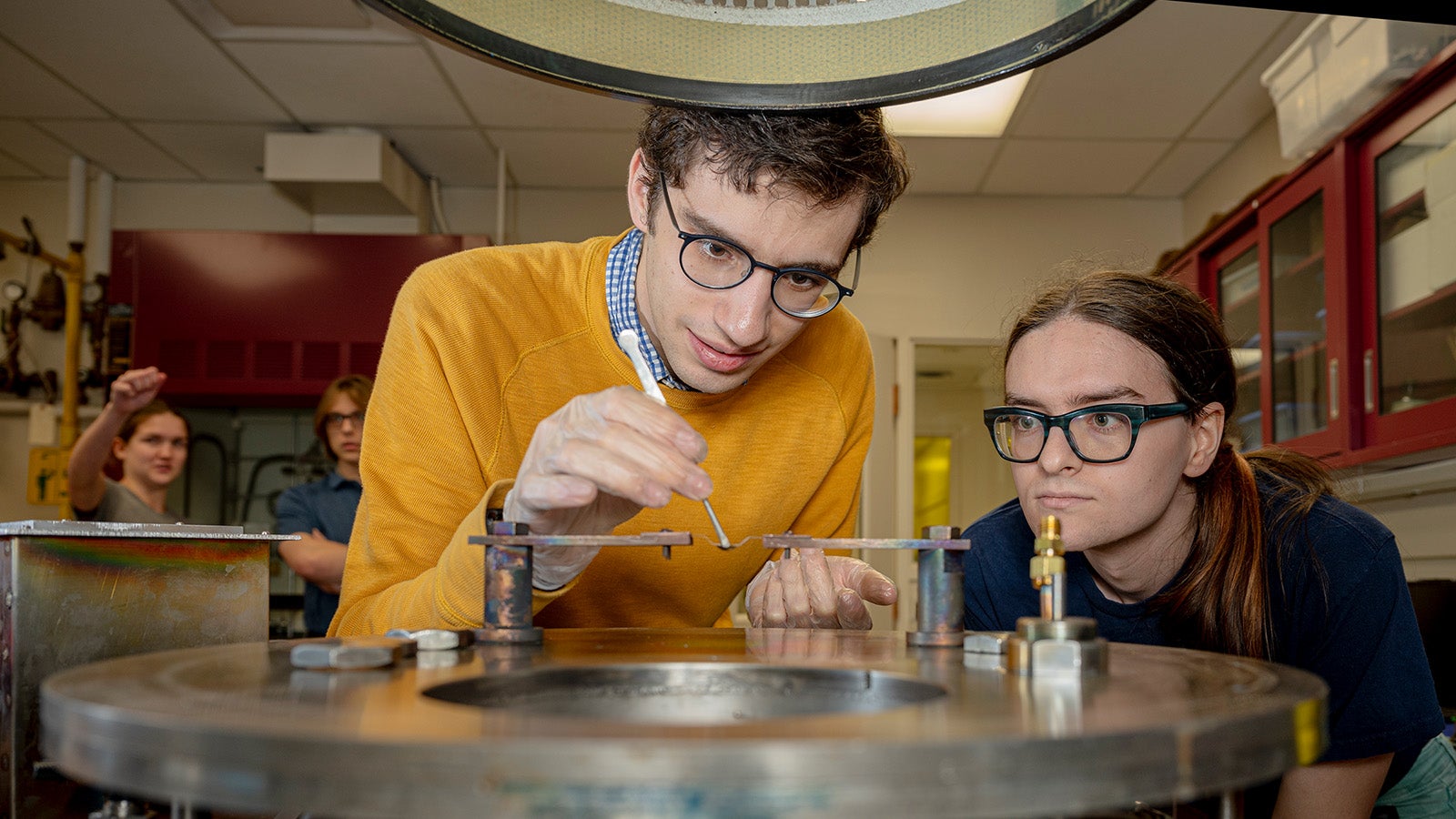
Program Overview
Physics and Astronomy
Study the fundamental questions of the universe.
Fundamental Questions, Versatile Methods
100% of tenured faculty have co-authored articles with their students
Collaboration is Community
Solve problems with your peers in Wright Laboratory, Oberlin’s home for physics students.

$620,000 in active National Science Foundation grants awarded to members of the department.
Research Across the World
From the Anton Pannekoek Institute in the Netherlands to the Aperture Spherical Telescope in China.

Undergraduate Research
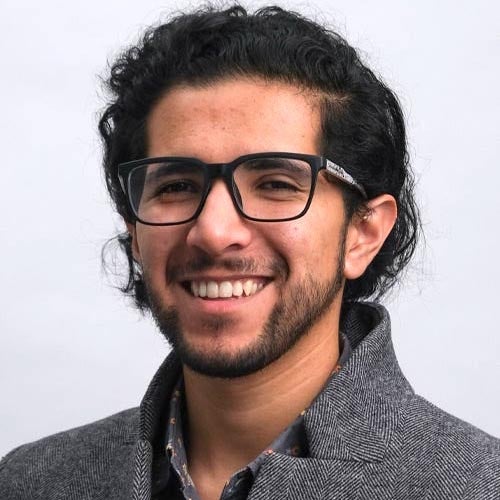
We have compelling evidence of the existence of dark matter. If detected, dark matter would revolutionize the entire field of physics.
Featured Courses
PHYS 051
Einstein and Relativity
How can the speed of light be the same for someone on the sidewalk and someone driving down the road? How can before and after differ for those two people? Don't just calculate the answers to such questions, learn to understand them.
- Taught by
PHYS 242
Electronics
Explore the analog and digital worlds through circuit design and construction. Transmit sound through light waves, build amplifiers and filters, make a digital thermometer using a microprocessor, and much more. Course starts with the basics and culminates in a final project of your own design.
- Taught by
- Jason Stalnaker
ASTR 302
Galaxies and Cosmology
Dive deeply into an understanding of galaxies and their evolution, in the context of an ever-expanding Universe. How do we use color & shape to learn a galaxy’s history? On larger scales, learn how distances are measured to ancient galaxies, and how this taught us about the Universe’s evolution.
- Taught by
- Jillian Scudder
PHYS 312
Quantum Mechanics
If insanity is “doing the same thing over and over and expecting a different result” then down at the quantum level the universe is insane. Explore the concepts and mathematics behind the beautiful theory of quantum mechanics which explains this bizarre behavior that governs so much of our modern technology.
- Taught by
- Stephen FitzGerald
Student Profiles
Exploring Interstellar Waves
As part of a summer research project, Jakob Faber ’21 investigated the mysterious properties of interstellar radio waves.

NSF Fellow and Athlete
Rainie Heck ’20, received a National Science Foundation (NSF) Graduate Research Fellowship to support doctoral research.

Astrophysics in Montreal
Before beginning graduate work at Cornell, Stella Ocker ’17 conducted summer research at the McGill Space Institute.
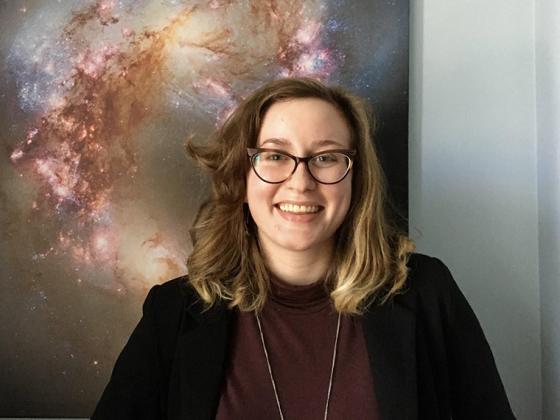
Upcoming Physics and Astronomy Events
Details: Date, Time, and Location
Date
-
Time
-
Location
Observatory and Taylor Planetarium, Peters Hall
Observe the Night Sky
Details: Date, Time, and Location
Date
-
Time
-
Location
Wright Laboratory of Physics
Oberlin College Physics & Astronomy Lecture Series: Hillary Pan ’17
Next Steps
Get in touch; we would love to chat.
